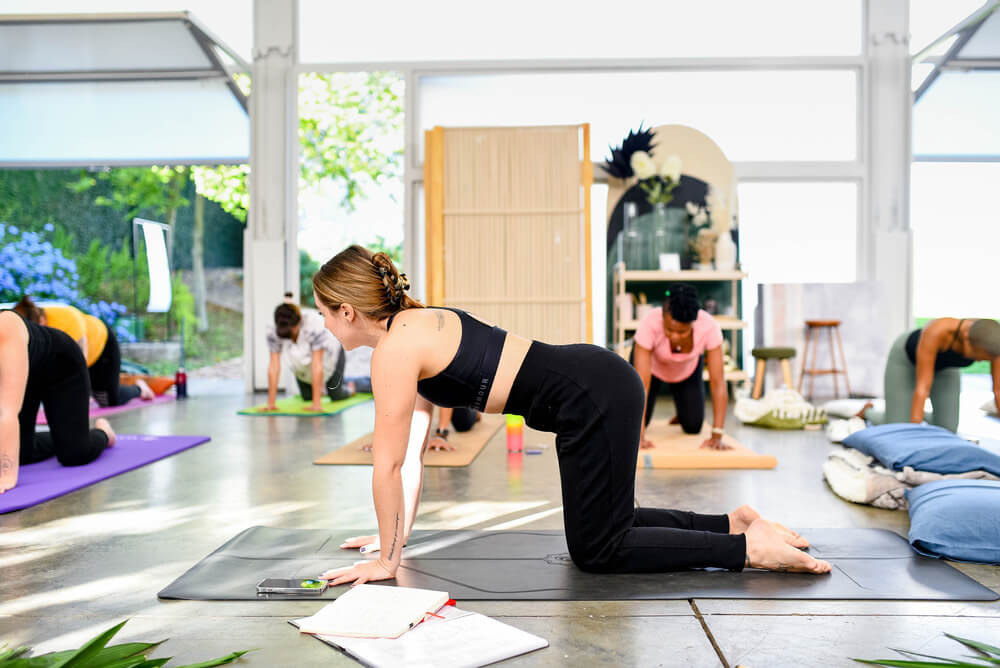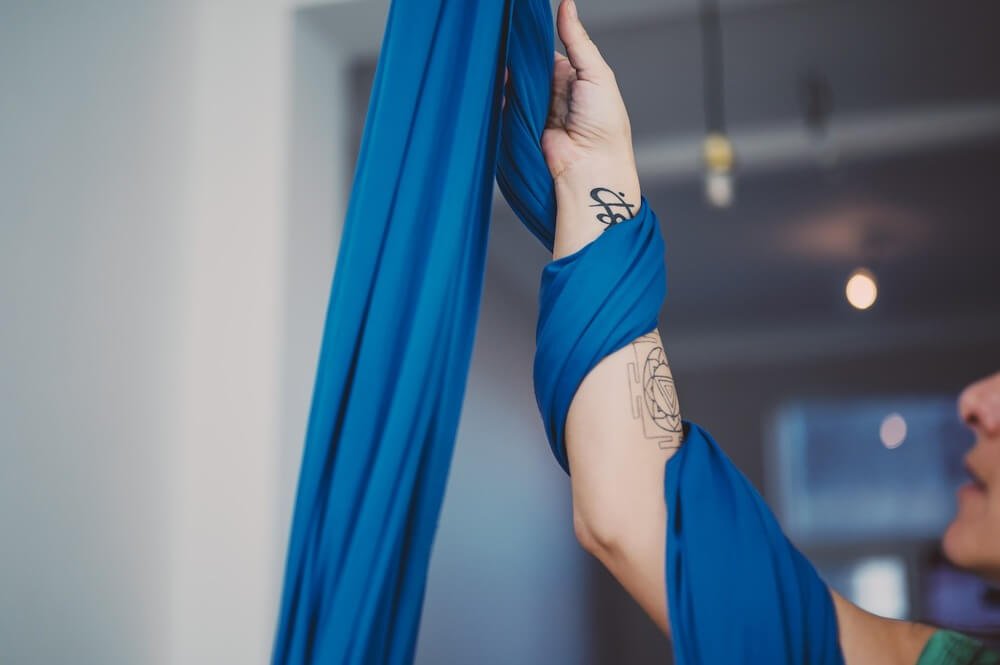When it comes to your yoga practice, the right mat can make all the difference. But with the popularity of yoga increasing around the world, there are so many mats on offer that it can be overwhelming.
Yoga mats are designed to suit all types of yogis, and you might have to try a few different types before you find what works best for your practice. But to make things easier, here is a guide to help you choose the right type of yoga mat.
Yoga Mat Buying Guide
Whether you practice hot yoga, vinyasa, or aerial yoga, a yoga mat is an essential prop for your practice. While not all yogis place the same importance on a yoga mat, there’s no doubt that a good mat makes a difference.
Below you’ll find the different factors to consider before buying a yoga mat.
Note: If you can, test out the mat before you buy it, we recommend you do so.
Thickness
The type of thickness you prefer will depend on your own body and practice. 4mm is an ideal thickness because it’s not too thin or too thick. If your mat is too thick, you’ll feel less connected to the floor in asanas like tree pose or mountain pose.
However, if you’re doing lunges or other asanas where your knees are on the ground, it can get uncomfortable. But you can combat this with a yoga cushion or by folding the mat under your knee for additional support.
The thickness also affects how bulky and heavy your yoga mat is. This is something to keep in mind if you travel a lot. For avid adventurers, you can get ultra-thin travel yoga mats that fold up small and allow you to do yoga no matter where you are.
Material
When it comes to suede, I’d recommend testing the mat in a child’s pose as well as in standing positions. Depending on the suede used, going into poses like a child’s pose can cause carpet burn from the friction. Not fun.
The material of your yoga mat will affect the grip, thickness, sponginess, and how earth-friendly it is. It’ll also determine how long your mat will last you.
One of the most popular materials for yoga mats is PVC or TPE. But many yogis prefer to go for more natural and eco-friendly options like recycled rubber, cotton, or jute.
Note: If you’re allergic to latex, stay away from natural rubber.
Grip
Slipping and sliding during a yoga class is a nightmare. For poses like the warrior series and lunges, you need a mat with a strong grip. Without a strong grip, your practice will be all over the place.
If possible, before you buy a mat for yoga, you should test the grip. But also keep in mind that some mats will become more sticky with moisture. This is incredible for hot yoga, but if you can’t handle the heat (like me) or prefer a traditional practice, you can always carry around a spray bottle or mat spray to activate the grip.

Texture
The texture doesn’t just affect the grip and traction of the yoga mat, but it also affects the overall feel of the mat. As someone who is very tactile, the texture of a mat is important to me. I prefer a smooth, soft surface like suede as opposed to something bumpy. Keep in mind that the texture of a mat can either be man-made or material dependent.
Yoga mat texture greatly affects the overall comfort of your mat, so it’s important that you find something you like.
Cork mats are a popular choice, but they can be quite rough on the feet. I used one for a while, and even though the grip is great, my sensitive feet demanded something softer.
Personally, I love a suede mat, and I’m learning to love my soft-touch PVC mat. I haven’t had much experience with TPE, but I know plenty of yogis that love it. It’s also a popular studio yoga mat choice.
In summary, no matter what texture you prefer, there’s something for everyone. If you’re looking for something smooth, PVC is the way. Suede is soft to the touch, while cork is a bit harder
Quality
Yoga mats are an investment. If you buy a cheap yoga mat, you’re buying a yoga mat you’ll need to replace in a few months. You don’t want to deal with crumbling mats, weak materials, and unnecessary waste.
Honestly, if you’re serious about yoga, it’s worth investing in a good-quality yoga mat. You’ll be able to feel the difference immediately. You don’t have to get the top of the range or spend a fortune. I’d recommend budgeting about R1000 for your yoga mat.

How Much Does a Yoga Mat Cost?
Yoga Mats can range from R100 up to R3000. This will all depend on the material, quality, design, brand, and whether they’re a local or international company.
A Mocana yoga mat will set you back about R2700, but they are incredible quality. If you ask Sabrina about yoga mats, her absolute best is the Manduka and Liforme yoga mats. But these aren’t as readily available in South Africa.
Suede yoga mats cost about R1000 and come in stunning patterns. Personally, I love my suede mats and would definitely recommend trying one out.
If you’re just starting out. you can opt for a more affordable option like a TPE yoga mat before making a larger investment later.
Testing Out a Yoga Mat
If you’re able to try your yoga mat out before you buy it, do! To test the quality and worth of your yoga mat, try the following poses:
- Child’s pose
- Crescent lunge or tabletop
- Warrior 1,2 and 3
- Dolphin pose
- Savasana
For a full breakdown, we’ve got a post on the best poses for testing a yoga mat.
Finding your Mat
A mat becomes an extension of your practice. It carries you and supports you along your yoga journey. It comes with you to yoga classes and keeps you stable and comfy. Your mat also allows you to learn and grow.
Note: This site contains product affiliate links. We may receive a commission if you make a purchase after clicking on one of these links.



